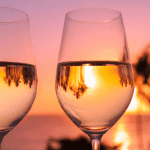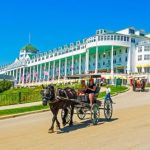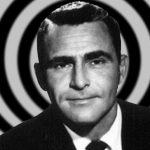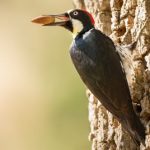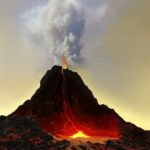 Weird Stuff
Weird Stuff  Weird Stuff
Weird Stuff  Our World
Our World 10 Ways Your Christmas Tree Is More Lit Than You Think
 Movies and TV
Movies and TV The 10 Coolest Stars to Set Sail on The Love Boat
 History
History 10 Things You Didn’t Know About the American National Anthem
 Technology
Technology Top 10 Everyday Tech Buzzwords That Hide a Darker Past
 Humans
Humans 10 Everyday Human Behaviors That Are Actually Survival Instincts
 Animals
Animals 10 Animals That Humiliated and Harmed Historical Leaders
 History
History 10 Most Influential Protests in Modern History
 Creepy
Creepy 10 More Representations of Death from Myth, Legend, and Folktale
 Technology
Technology 10 Scientific Breakthroughs of 2025 That’ll Change Everything
 Weird Stuff
Weird Stuff Ten Bizarre Facts About The Doge Meme
 Our World
Our World 10 Ways Your Christmas Tree Is More Lit Than You Think
 Movies and TV
Movies and TV The 10 Coolest Stars to Set Sail on The Love Boat
Who's Behind Listverse?

Jamie Frater
Head Editor
Jamie founded Listverse due to an insatiable desire to share fascinating, obscure, and bizarre facts. He has been a guest speaker on numerous national radio and television stations and is a five time published author.
More About Us History
History 10 Things You Didn’t Know About the American National Anthem
 Technology
Technology Top 10 Everyday Tech Buzzwords That Hide a Darker Past
 Humans
Humans 10 Everyday Human Behaviors That Are Actually Survival Instincts
 Animals
Animals 10 Animals That Humiliated and Harmed Historical Leaders
 History
History 10 Most Influential Protests in Modern History
 Creepy
Creepy 10 More Representations of Death from Myth, Legend, and Folktale
 Technology
Technology 10 Scientific Breakthroughs of 2025 That’ll Change Everything
10 Explorers Who Discovered Lands Virtually Unknown to Any Human
Christopher Columbus did not discover America. Ferdinand Magellan did not discover the East Indies. James Cook did not discover Australia. Humans were living in all these places long before the Europeans arrived. About 60,000 years ago, Homo sapiens left their African homeland and began the epic migration that would see our species dominant in all corners of the world even before the dawn of recorded history.
Humans entered Europe 45,000-35,000 years ago; at the same time, groups trekking eastward colonized the vast expanses of Asia. Some moved northward and crossed the land bridge that is now the Bering Strait 20,000-15,000 years ago, then southward, reaching the tip of South America some 3,000 years later. Australia was settled even earlier—50,000 years ago—with the Pacific islands being the last to be inhabited, 3,000-2,500 years ago. By the time historical records began to be written, all the continents except Antarctica had been discovered, explored, and settled.
The period beginning in the 15th century was an Age of Discovery only to Europeans, not to humanity at large. But this doesn’t mean Europeans didn’t discover any new land. There were still pockets of isolated locations on the planet shrouded in legend or myth or mentioned only in obscure texts, if not totally unknown. The intrepid explorers who ventured into these terra incognita may not be as famous as Columbus, Magellan, or Cook, but they were nevertheless the real discoverers who opened up new frontiers to human settlement for the first time in history.
Related: 10 Facts About Life in the World’s Tiniest Island Nation
10 Pytheas of Massilia: Iceland
Pytheas was a Greek merchant from Massilia (modern Marseilles) who was known as a skilled navigator, astronomer, and mariner. Around 330 BC, he set sail on a daring voyage that took him to the mysterious lands of the far north, which supplied the Mediterranean with tin, gold, and amber. Pytheas’s book On the Ocean may be the first to describe the British Isles and Europe’s northern regions and their inhabitants.
But Pytheas courageously pushed on further north to the mythic lands believed by the Greeks to be inhabited by the giant Hyperboreans. Pytheas called one of these places Ultima Thule, and scholars have argued over which land he was referring to. Some have speculated it was Norway, the Faroes, or the Shetlands. Pytheas described it as six days’ sailing from Britain, surrounded by ice floes, where the sun didn’t set in the summer. These and other indicators lead many to believe it was Iceland.
Also significant is the seemingly unintelligible name “Thule” or “Thyle.” Could it have been corrupted over time and originally read “Thymele”? The word means “altar, altar-slab” in Greek. The place might have reminded Pytheas of the massive altar slabs in temples, which is quite a good description of cliffs of volcanic rock across the Icelandic landscape. It would be many centuries after Pytheas when Iceland was settled, first by Irish monks and then by the Vikings.[1]
9 João Gonçalves Zarco: Madeira
Before the 15th century, the island group we call Madeira was known only through Phoenician, Greek, Roman, and Arab texts. No human habitation was recorded there prior to 1419 when a Portuguese expedition led by Joao Goncalves Zarco that had been exploring Guinea for Prince Henry the Navigator was blown westwards by a violent storm. The fleet found safety and shelter by an island gratefully named Porto Santo.
From Porto Santo, Zarco and his companion Bartolomeu Perestrelo could see a shadowy shape looming on the horizon. It was a year later that they started to explore what the grey mass was. It turned out to be Madeira Island, a lush green paradise that the Portuguese had lost no time settling in. To encourage colonization, Prince Henry divided the archipelago into three captaincies or feudal administrative districts, giving one to Zarco. Perestrelo got Porto Santo.
Before long, Madeira became an important stopover for ships crossing the Atlantic. The colony thrived, and as early as 1460, farmers began growing the vineyards that produced the famous Madeira wine. The island’s forests provided Portugal the wood for its ships, and its sugar plantations, the only ones in Europe, provided syrup and rum. [2]
8 Joao da Nova: Ascension and St. Helena
The Portuguese went on to discover the uninhabited islands of Cape Verde and Sao Tome and Principe, but who exactly takes the credit is unclear, so we move on further off the African coast to two lonely islands in the middle of the Atlantic, Ascension and St. Helena.
Joao da Nova was a Spanish navigator in the service of Portugal when he stumbled upon Ascension on his way to India in 1501. Initially named Concepcion, the Portuguese saw nothing to attract them to the dry and barren rock and promptly forgot all about it until it was rediscovered on Ascension Day 1503 by Afonso de Albuquerque, hence its present name.
In 1502, Nova, on his way back from India, discovered another volcanic island south of Ascension he called St. Helena in honor of the mother of Emperor Constantine, whose feast day it was. No one else but the Portuguese knew of St. Helena until 1588, when English navigator Thomas Cavendish landed there. Soon, the island became a port of call for sea voyages from Europe to the East Indies. The British took control, and the lonely outpost was deemed the most suitable place to exile Napoleon Bonaparte in 1815. The nearby uninhabited island of Ascension was garrisoned by the British at the same time to deny it to the French.[3]
7 Tristao da Cunha: Tristan da Cunha
In 1506, Portuguese king Manuel I sent a fleet of 16 ships commanded by Tristao da Cunha to conquer Socotra in the Indian Ocean. On the way, he sighted an isolated volcanic island in the South Atlantic, which he named after himself. Tristan did not land on the uninhabited rock, but his discovery was put on nautical maps beginning in 1509 and appeared on Mercator’s 1541 world map.
The first humans on Tristan da Cunha were the Dutch in 1643, but the lack of a safe harbor frustrated their plans for a supply base. Tristan da Cunha and the five other islands in the group make up the world’s remotest archipelago, some 1,500 miles (2,400 km) from St. Helena and about 1,750 to 2,000 miles (2,800 to 3,200 km.) from the inhabited landmasses of Africa and South America. This isolation made settlement difficult, but Jonathan Lambert of Salem, Massachusetts, attempted to establish a trading station in 1810 with three men. Only one survivor was found by the British in 1813.
Tristan da Cunha was annexed by the UK in 1816, and a settlement called Edinburgh of the Seven Seas became home to former soldiers of the garrison, shipwrecked sailors, European travelers, and women from St. Helena. Today, the population is around 300 people.[4]
6 Juan de Bermudez: Bermuda
A native of the Andalusian village of Palos de la Frontera, Spanish navigator Juan de Bermudez was possibly the first human to see the island, which now bears his name in 1505. However, unverified legend tells of 6th-century Irish monk and adventurer St. Brendan coming upon an “isle of birds” during his westward ocean voyage.
Bermudez indeed saw shrieking Cahow birds on the island buffeted by violent storms. No other human was in evidence, and Bermudez himself saw little value in the new land and left. His discovery did appear in a 1511 map as “La Bermude,” but the place remained uninhabited until 1609 when the English ship Sea Venture was wrecked by a hurricane off Bermuda while on the way to the Jamestown colony in Virginia.
Some of the survivors stayed, the settlement grew, and within a few years, Bermuda was British territory. Slaves were brought over from Africa, and today, their descendants make up three-fifths of the population.[5]
5 Fray Tomas de Berlanga: Galapagos
In 1535, the Spanish Dominican Tomas de Berlanga, bishop of Panama, set out by sea to Peru when adverse winds drove him toward some volcanic islands about 600 miles (965 km) off the Ecuadoran coast. He called them Las Encantadas (The Enchanted), but despite the name, Berlanga found they had little enchantment to offer. The place had inhospitable terrain and lacked water, but the priest marveled at the giant tortoises he found there.
In his letter to King Charles VI, Berlanga wrote of seeing these tortoises (“galapagos” in Spanish). In Mercator’s map of 1569, the islands bear the new name Ysolas de los Galopegos. However, the Spaniards found living in the Galapagos difficult and unappealing and made no attempt at a permanent settlement. Only pirates and whalers made the islands a haven. The unusual biodiversity, however, most of them unique to the area, made the Galapagos a naturalist’s paradise.
The islands finally gained the world’s attention with the visit of Charles Darwin in 1835. His investigation of wildlife gave him significant insights into natural selection, the crucial element of the theory of evolution. Ecuador had annexed the Galapagos in 1832 and turned Floreana Island into a penal colony, and settlers began to arrive. Today, the islands are home to about 25,000 people, and 200,000 tourists visit annually to witness the fascinating wildlife.[6]
4 Willem Barentsz: Svalbard
The search for the Northeast Passage, the sea route from Europe to Asia, took Dutch explorer Willem Barentsz deep into the Arctic Ocean three times. On his third expedition in 1596, he sighted Bjørnøya, the southernmost island of what turned out to be an archipelago. A week later, Barentsz discovered the largest island with sharp, tapering mountains, which inspired him to name it Spitsbergen (“jagged peaks”).
The islands were allegedly known to the Vikings and Russian Pomors centuries before, but there is no physical evidence to substantiate these claims. Barentsz was the first documented human to see it. Though Barentsz and many of his crew perished when they were trapped by the ice near Novaya Zemlya, the survivors brought home news of the newfound archipelago. When it came under Norwegian control, they named it Svalbard (“cold rim”).
Despite the hostile environment, whalers, trappers, and hunters began to frequent Svalbard, sojourning among the polar bears and walruses until permanent settlements were established in the 17th century. Wanton exploitation of marine resources followed, leading to the near extinction of some whale species.[7]
3 John Davis/Sebald de Weerdt: Falklands
As a bone of contention between Britain and Argentina, the Falkland Islands have a long, disputed history, beginning with who takes the credit for their discovery. Forgotten documents have been unearthed that seem to indicate the Portuguese knew of the isles as early as 1518-19, but this is not definitely proven. For the first person to actually record a sighting, it may be a toss-up between Englishman John Davis and Dutchman Sebald de Weerdt.
In 1596, Davis, in command of the ship Desire, was buffeted by storms at the Strait of Magellan. He and his crew, suffering from scurvy, starvation, and cold, were driven among some islands “lying fifty leagues or better from the shore East and Northerly from the Straits,” probably those in the West Falklands. In 1600, Weerdt’s expedition was similarly beset by hunger after aborting a disastrous attempt to cross the Pacific when it came upon “three small islets to windward, not marked in any maps…in lat. 50 deg. 40’S., sixty leagues from the continent,” which were christened Sebaldine Islands and now known as the Jason Islands.
Neither Davis nor Weerdt made a first landing—that honor goes to John Strong in 1690, who named the channel separating the two main islands Falkland Sound after Viscount Falkland, Treasurer to the Royal Navy. However, it was the French navigator Louis-Antoine de Bougainville who established the first settlement in 1764 on East Falkland while the British occupied West Falkland. The Spanish held on to their settlement until 1811. Beginning in 1820, Argentina claimed the land for herself. We all know how that turned out.[8]
2 Fabian von Bellingshausen: Antarctica
The frozen wastes of Antarctica, the last continent to be discovered, remained a mystery up to the 19th century. Oral traditions suggest Maori seafarers may have seen it in the 7th century. Europeans suspected the existence of a landmass in the south to balance out the continents up north, “A tract of land near the Pole, which is the Source of most of the ice which is spread over this vast Southern Ocean,” as Captain James Cook wrote. From 1772-1775, Cook searched in vain for this Terra Australis Incognita (“Unknown Southern Land”), at one point coming to within 80 miles (129 km) of the continent.
Finding Antarctica was considered impossible, but potential profits from seal skins tempted the Russians, British, and Americans to try again. The Russian expedition under Fabian von Bellingshausen dared to go farther than Cook through the icy, forbidding waters, and on January 27, 1820, Bellingshausen spotted “an ice shore of extreme height,” possibly the ice shelves of Queen Maud Land. British naval officer Edward Bransfield came close to taking the credit for first recorded sighting—he saw the tip of the Antarctic Peninsula just three days later.
The next year, American John Davis became the first human to step on Antarctic snow. But the unforgiving climate precluded permanent human settlement. Today, only a few thousand people at a time live and work temporarily on the vast continent, mostly scientists, researchers, and support staff.[9]
1 Boris Vilkitsky: Svernaya Zemlya
Believe it or not, explorers were still discovering new land in the late 19th and early 20th centuries. East of Svalbard lie 191 uninhabited and mostly glaciated islands discovered in 1872-74 by an Austro-Hungarian expedition led by Julius Payer and Carl Weyprecht and named Franz Josef Land after the Austrian Emperor. However, charting Earth’s last unknown islands would not take place until the 1930s.
In the first decade of the 20th century, humans had known of the planet Neptune, which was 3 billion miles (4.4 billion km) away, for more than 50 years. But the region just off Cape Chelyuskin on the Siberian coast was a blank on world maps. In 1913, just five years after the Cubs won the World Series, Russian surveyor Boris Vilkitsky saw for the first time a frigid archipelago of four large islands and 70 smaller ones inhabited only by birds, lemmings, bears, wolves, and other Arctic creatures. He planted the Russian flag on the largest island, naming it after Tsar Nicholas II. After 1924, the archipelago came to be called Severnaya Zemlya (“North Land”).
Though airships like the Graf Zeppelin made subsequent flights over the islands, they weren’t properly surveyed before Soviet explorer Georgy Ushakov spent 1930-32 in what he described as unmitigated “grimness” and “depressing, lifeless relief.” Even today, the glaciers, mossy tundra, and fjords are not attractive to people, and Severnaya Zemlya remains unsettled except for the temporary residents of the Prima Arctic base.[10]
Christopher Columbus did not discover America. Ferdinand Magellan did not discover the East Indies. James Cook did not discover Australia. Humans were living in all these places long before the Europeans arrived. About 60,000 years ago, Homo sapiens left their African homeland and began the epic migration that would see our species dominant in all corners of the world even before the dawn of recorded history.
Humans entered Europe 45,000-35,000 years ago; at the same time, groups trekking eastward colonized the vast expanses of Asia. Some moved northward and crossed the land bridge that is now the Bering Strait 20,000-15,000 years ago, then southward, reaching the tip of South America some 3,000 years later. Australia was settled even earlier—50,000 years ago—with the Pacific islands being the last to be inhabited, 3,000-2,500 years ago. By the time historical records began to be written, all the continents except Antarctica had been discovered, explored, and settled.
The period beginning in the 15th century was an Age of Discovery only to Europeans, not to humanity at large. But this doesn’t mean Europeans didn’t discover any new land. There were still pockets of isolated locations on the planet shrouded in legend or myth or mentioned only in obscure texts, if not totally unknown. The intrepid explorers who ventured into these terra incognita may not be as famous as Columbus, Magellan, or Cook, but they were nevertheless the real discoverers who opened up new frontiers to human settlement for the first time in history.
Related: ?utm_source=seealso&utm_medium=link&utm_campaign=direct
10 Pytheas of Massilia: Iceland
Pytheas was a Greek merchant from Massilia (modern Marseilles) who was known as a skilled navigator, astronomer, and mariner. Around 330 BC, he set sail on a daring voyage that took him to the mysterious lands of the far north, which supplied the Mediterranean with tin, gold, and amber. Pytheas’s book On the Ocean may be the first to describe the British Isles and Europe’s northern regions and their inhabitants.
But Pytheas courageously pushed on further north to the mythic lands believed by the Greeks to be inhabited by the giant Hyperboreans. Pytheas called one of these places Ultima Thule, and scholars have argued over which land he was referring to. Some have speculated it was Norway, the Faroes, or the Shetlands. Pytheas described it as six days’ sailing from Britain, surrounded by ice floes, where the sun didn’t set in the summer. These and other indicators lead many to believe it was Iceland.
Also significant is the seemingly unintelligible name “Thule” or “Thyle.” Could it have been corrupted over time and originally read “Thymele”? The word means “altar, altar-slab” in Greek. The place might have reminded Pytheas of the massive altar slabs in temples, which is quite a good description of cliffs of volcanic rock across the Icelandic landscape. It would be many centuries after Pytheas when Iceland was settled, first by Irish monks and then by the Vikings.[]
9 João Gonçalves Zarco: Madeira
Before the 15th century, the island group we call Madeira was known only through Phoenician, Greek, Roman, and Arab texts. No human habitation was recorded there prior to 1419 when a Portuguese expedition led by Joao Goncalves Zarco that had been exploring Guinea for Prince Henry the Navigator was blown westwards by a violent storm. The fleet found safety and shelter by an island gratefully named Porto Santo.
From Porto Santo, Zarco and his companion Bartolomeu Perestrelo could see a shadowy shape looming on the horizon. It was a year later that they started to explore what the grey mass was. It turned out to be Madeira Island, a lush green paradise that the Portuguese had lost no time settling in. To encourage colonization, Prince Henry divided the archipelago into three captaincies or feudal administrative districts, giving one to Zarco. Perestrelo got Porto Santo.
Before long, Madeira became an important stopover for ships crossing the Atlantic. The colony thrived, and as early as 1460, farmers began growing the vineyards that produced the famous Madeira wine. The island’s forests provided Portugal the wood for its ships, and its sugar plantations, the only ones in Europe, provided syrup and rum. [2]
8 Joao da Nova: Ascension and St. Helena
The Portuguese went on to discover the uninhabited islands of Cape Verde and Sao Tome and Principe, but who exactly takes the credit is unclear, so we move on further off the African coast to two lonely islands in the middle of the Atlantic, Ascension and St. Helena.
Joao da Nova was a Spanish navigator in the service of Portugal when he stumbled upon Ascension on his way to India in 1501. Initially named Concepcion, the Portuguese saw nothing to attract them to the dry and barren rock and promptly forgot all about it until it was rediscovered on Ascension Day 1503 by Afonso de Albuquerque, hence its present name.
In 1502, Nova, on his way back from India, discovered another volcanic island south of Ascension he called St. Helena in honor of the mother of Emperor Constantine, whose feast day it was. No one else but the Portuguese knew of St. Helena until 1588, when English navigator Thomas Cavendish landed there. Soon, the island became a port of call for sea voyages from Europe to the East Indies. The British took control, and the lonely outpost was deemed the most suitable place to exile Napoleon Bonaparte in 1815. The nearby uninhabited island of Ascension was garrisoned by the British at the same time to deny it to the French.[3]
7 Tristao da Cunha: Tristan da Cunha
In 1506, Portuguese king Manuel I sent a fleet of 16 ships commanded by Tristao da Cunha to conquer Socotra in the Indian Ocean. On the way, he sighted an isolated volcanic island in the South Atlantic, which he named after himself. Tristan did not land on the uninhabited rock, but his discovery was put on nautical maps beginning in 1509 and appeared on Mercator’s 1541 world map.
The first humans on Tristan da Cunha were the Dutch in 1643, but the lack of a safe harbor frustrated their plans for a supply base. Tristan da Cunha and the five other islands in the group make up the world’s remotest archipelago, some 1,500 miles (2,400 km) from St. Helena and about 1,750 to 2,000 miles (2,800 to 3,200 km.) from the inhabited landmasses of Africa and South America. This isolation made settlement difficult, but Jonathan Lambert of Salem, Massachusetts, attempted to establish a trading station in 1810 with three men. Only one survivor was found by the British in 1813.
Tristan da Cunha was annexed by the UK in 1816, and a settlement called Edinburgh of the Seven Seas became home to former soldiers of the garrison, shipwrecked sailors, European travelers, and women from St. Helena. Today, the population is around 300 people.[4]
6 Juan de Bermudez: Bermuda
A native of the Andalusian village of Palos de la Frontera, Spanish navigator Juan de Bermudez was possibly the first human to see the island, which now bears his name in 1505. However, unverified legend tells of 6th-century Irish monk and adventurer St. Brendan coming upon an “isle of birds” during his westward ocean voyage.
Bermudez indeed saw shrieking Cahow birds on the island buffeted by violent storms. No other human was in evidence, and Bermudez himself saw little value in the new land and left. His discovery did appear in a 1511 map as “La Bermude,” but the place remained uninhabited until 1609 when the English ship Sea Venture was wrecked by a hurricane off Bermuda while on the way to the Jamestown colony in Virginia.
Some of the survivors stayed, the settlement grew, and within a few years, Bermuda was British territory. Slaves were brought over from Africa, and today, their descendants make up three-fifths of the population.[5]
5 Fray Tomas de Berlanga: Galapagos
In 1535, the Spanish Dominican Tomas de Berlanga, bishop of Panama, set out by sea to Peru when adverse winds drove him toward some volcanic islands about 600 miles (965 km) off the Ecuadoran coast. He called them Las Encantadas (The Enchanted), but despite the name, Berlanga found they had little enchantment to offer. The place had inhospitable terrain and lacked water, but the priest marveled at the giant tortoises he found there.
In his letter to King Charles VI, Berlanga wrote of seeing these tortoises (“galapagos” in Spanish). In Mercator’s map of 1569, the islands bear the new name Ysolas de los Galopegos. However, the Spaniards found living in the Galapagos difficult and unappealing and made no attempt at a permanent settlement. Only pirates and whalers made the islands a haven. The unusual biodiversity, however, most of them unique to the area, made the Galapagos a naturalist’s paradise.
The islands finally gained the world’s attention with the visit of Charles Darwin in 1835. His investigation of wildlife gave him significant insights into natural selection, the crucial element of the theory of evolution. Ecuador had annexed the Galapagos in 1832 and turned Floreana Island into a penal colony, and settlers began to arrive. Today, the islands are home to about 25,000 people, and 200,000 tourists visit annually to witness the fascinating wildlife.[6]
4 Willem Barentsz: Svalbard
The search for the Northeast Passage, the sea route from Europe to Asia, took Dutch explorer Willem Barentsz deep into the Arctic Ocean three times. On his third expedition in 1596, he sighted Bjørnøya, the southernmost island of what turned out to be an archipelago. A week later, Barentsz discovered the largest island with sharp, tapering mountains, which inspired him to name it Spitsbergen (“jagged peaks”).
The islands were allegedly known to the Vikings and Russian Pomors centuries before, but there is no physical evidence to substantiate these claims. Barentsz was the first documented human to see it. Though Barentsz and many of his crew perished when they were trapped by the ice near Novaya Zemlya, the survivors brought home news of the newfound archipelago. When it came under Norwegian control, they named it Svalbard (“cold rim”).
Despite the hostile environment, whalers, trappers, and hunters began to frequent Svalbard, sojourning among the polar bears and walruses until permanent settlements were established in the 17th century. Wanton exploitation of marine resources followed, leading to the near extinction of some whale species.[7]
3 John Davis/Sebald de Weerdt: Falklands
As a bone of contention between Britain and Argentina, the Falkland Islands have a long, disputed history, beginning with who takes the credit for their discovery. Forgotten documents have been unearthed that seem to indicate the Portuguese knew of the isles as early as 1518-19, but this is not definitely proven. For the first person to actually record a sighting, it may be a toss-up between Englishman John Davis and Dutchman Sebald de Weerdt.
In 1596, Davis, in command of the ship Desire, was buffeted by storms at the Strait of Magellan. He and his crew, suffering from scurvy, starvation, and cold, were driven among some islands “lying fifty leagues or better from the shore East and Northerly from the Straits,” probably those in the West Falklands. In 1600, Weerdt’s expedition was similarly beset by hunger after aborting a disastrous attempt to cross the Pacific when it came upon “three small islets to windward, not marked in any maps…in lat. 50 deg. 40’S., sixty leagues from the continent,” which were christened Sebaldine Islands and now known as the Jason Islands.
Neither Davis nor Weerdt made a first landing—that honor goes to John Strong in 1690, who named the channel separating the two main islands Falkland Sound after Viscount Falkland, Treasurer to the Royal Navy. However, it was the French navigator Louis-Antoine de Bougainville who established the first settlement in 1764 on East Falkland while the British occupied West Falkland. The Spanish held on to their settlement until 1811. Beginning in 1820, Argentina claimed the land for herself. We all know how that turned out.[8]
2 Fabian von Bellingshausen: Antarctica
The frozen wastes of Antarctica, the last continent to be discovered, remained a mystery up to the 19th century. Oral traditions suggest Maori seafarers may have seen it in the 7th century. Europeans suspected the existence of a landmass in the south to balance out the continents up north, “A tract of land near the Pole, which is the Source of most of the ice which is spread over this vast Southern Ocean,” as Captain James Cook wrote. From 1772-1775, Cook searched in vain for this Terra Australis Incognita (“Unknown Southern Land”), at one point coming to within 80 miles (129 km) of the continent.
Finding Antarctica was considered impossible, but potential profits from seal skins tempted the Russians, British, and Americans to try again. The Russian expedition under Fabian von Bellingshausen dared to go farther than Cook through the icy, forbidding waters, and on January 27, 1820, Bellingshausen spotted “an ice shore of extreme height,” possibly the ice shelves of Queen Maud Land. British naval officer Edward Bransfield came close to taking the credit for first recorded sighting—he saw the tip of the Antarctic Peninsula just three days later.
The next year, American John Davis became the first human to step on Antarctic snow. But the unforgiving climate precluded permanent human settlement. Today, only a few thousand people at a time live and work temporarily on the vast continent, mostly scientists, researchers, and support staff.[9]
1 Boris Vilkitsky: Svernaya Zemlya
Believe it or not, explorers were still discovering new land in the late 19th and early 20th centuries. East of Svalbard lie 191 uninhabited and mostly glaciated islands discovered in 1872-74 by an Austro-Hungarian expedition led by Julius Payer and Carl Weyprecht and named Franz Josef Land after the Austrian Emperor. However, charting Earth’s last unknown islands would not take place until the 1930s.
In the first decade of the 20th century, humans had known of the planet Neptune, which was 3 billion miles (4.4 billion km) away, for more than 50 years. But the region just off Cape Chelyuskin on the Siberian coast was a blank on world maps. In 1913, just five years after the Cubs won the World Series, Russian surveyor Boris Vilkitsky saw for the first time a frigid archipelago of four large islands and 70 smaller ones inhabited only by birds, lemmings, bears, wolves, and other Arctic creatures. He planted the Russian flag on the largest island, naming it after Tsar Nicholas II. After 1924, the archipelago came to be called Severnaya Zemlya (“North Land”).
Though airships like the Graf Zeppelin made subsequent flights over the islands, they weren’t properly surveyed before Soviet explorer Georgy Ushakov spent 1930-32 in what he described as unmitigated “grimness” and “depressing, lifeless relief.” Even today, the glaciers, mossy tundra, and fjords are not attractive to people, and Severnaya Zemlya remains unsettled except for the temporary residents of the Prima Arctic base.[10]

